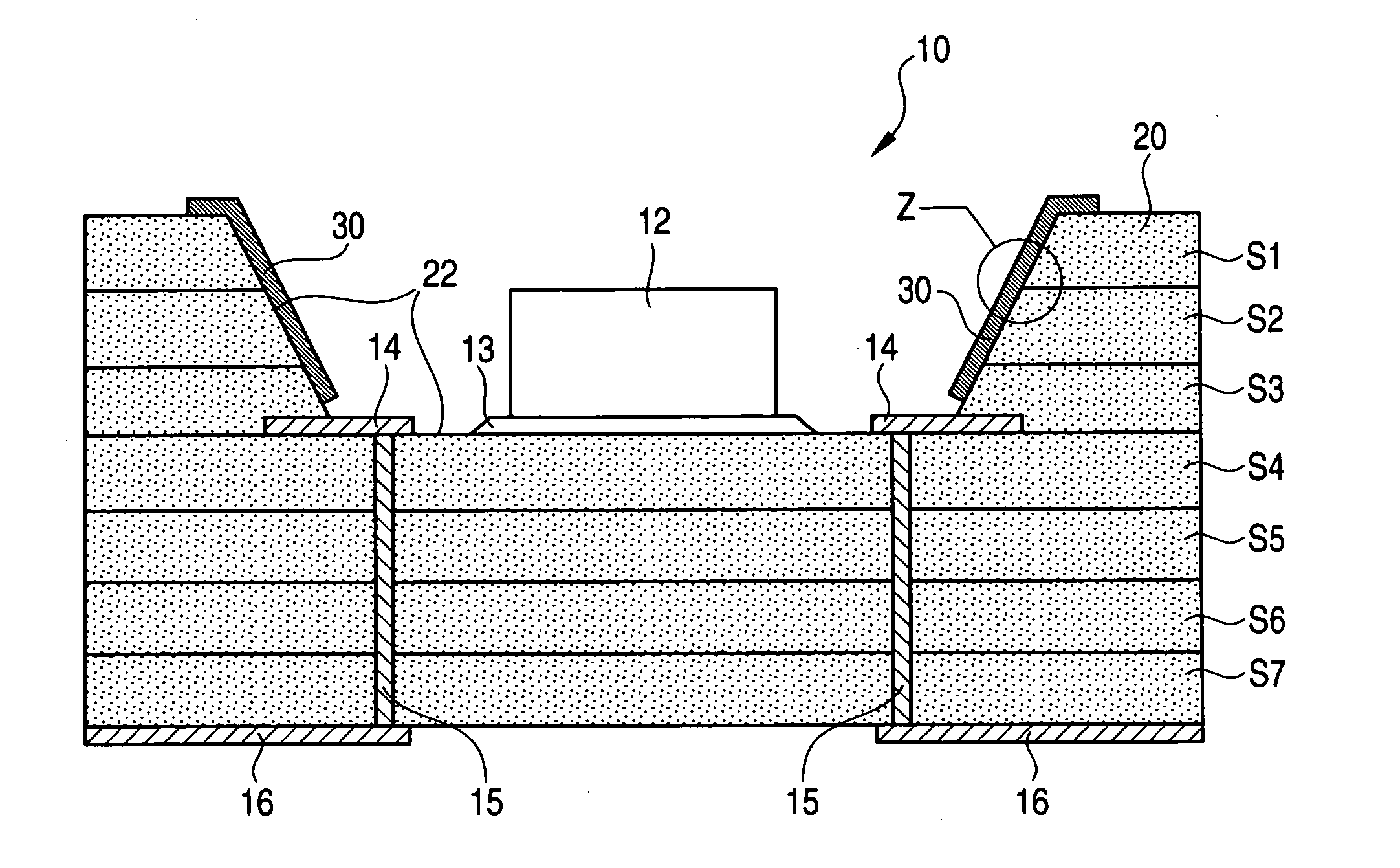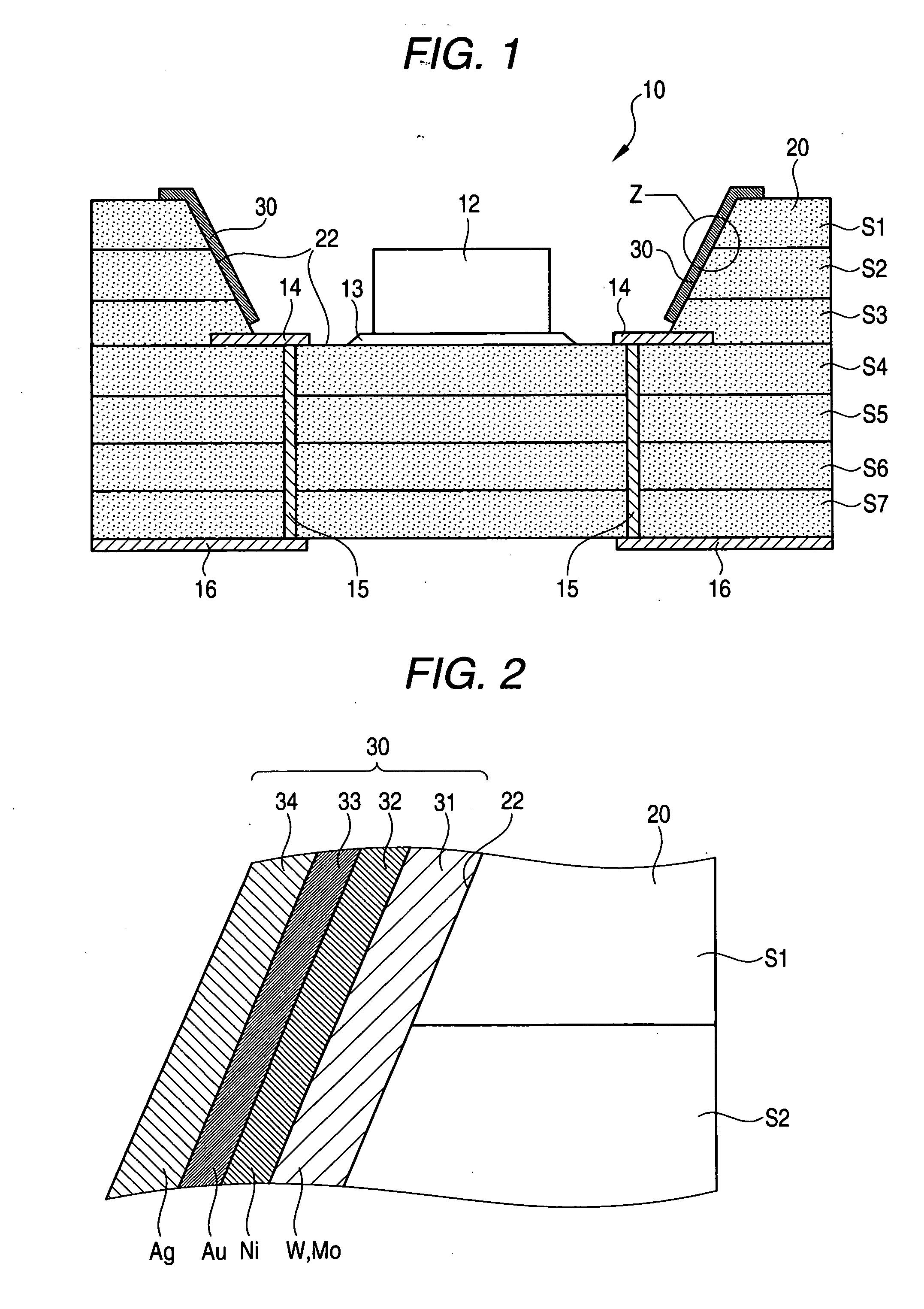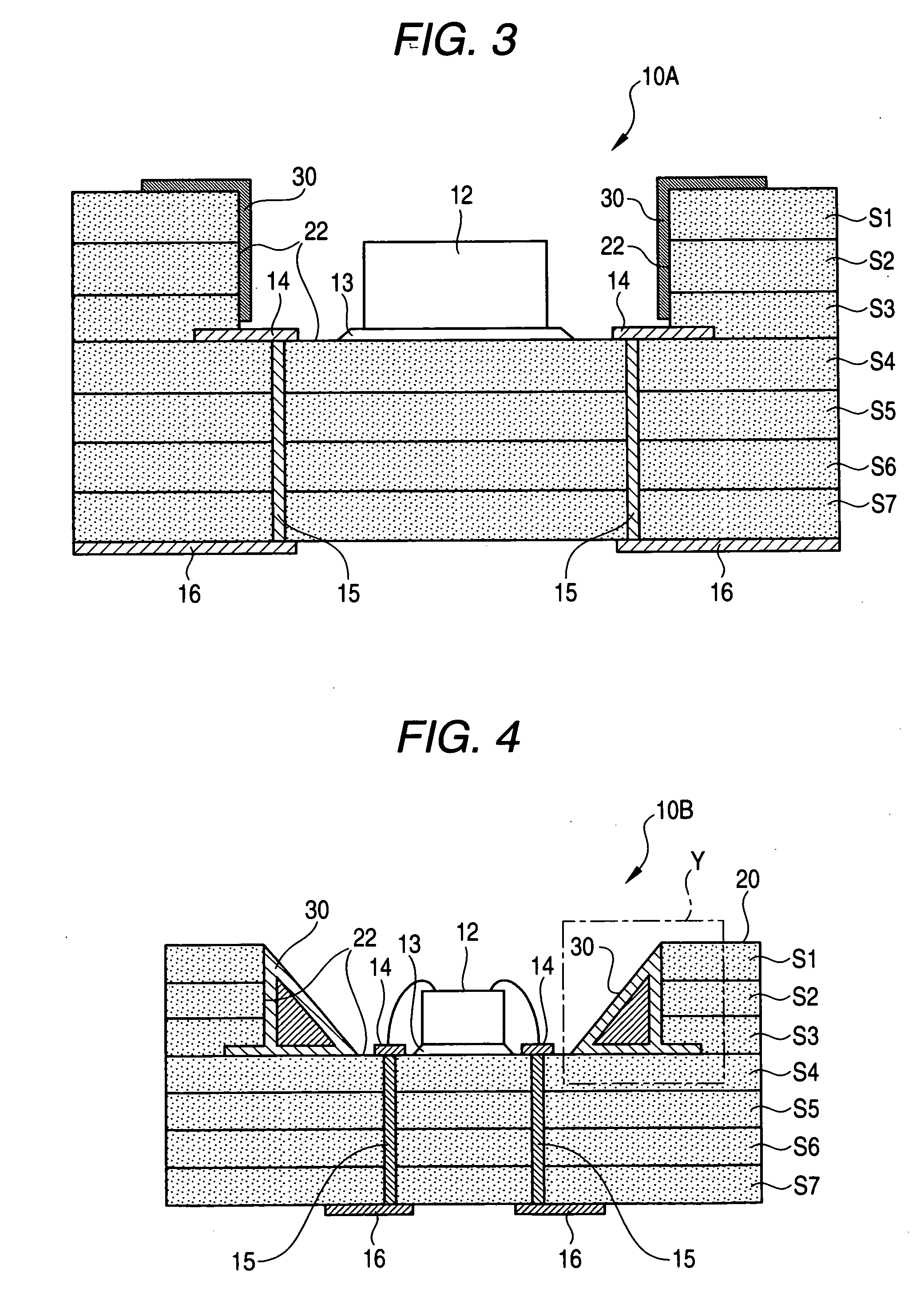Ceramic substrate, ceramic package for housing light emitting element
a technology of ceramic packaging and ceramic substrate, which is applied in the field of ceramic substrate and ceramic package for housing light emitting elements, can solve the problems that light cannot be efficiently reflected from the light emitting element mounted, and achieve the effects of reducing the smoothness of the metallic layer surface, reducing the cost, and peeling
- Summary
- Abstract
- Description
- Claims
- Application Information
AI Technical Summary
Benefits of technology
Problems solved by technology
Method used
Image
Examples
Embodiment Construction
[0057] In order to clarify the configuration and actions of the invention thus far described, here is described an embodiment of the invention. FIG. 1 is an explanatory view presenting a section of the essential portion of a ceramic package 10 for housing light emitting element according to an embodiment of the ceramic substrate of the invention. FIG. 2 is an explanatory view schematically showing a Z-portion in FIG. 1 in an enlarged scale.
[0058] As shown, the ceramic package 10 for housing light emitting element is equipped with a substrate body 20 configured by laminating ceramic layers, a cavity 22 opened in the surface of the substrate body 20, and a metallic layer 30 formed continuously along the surface of the substrate body 20. A conductive electrode layer 14 is formed on the bottom face of the cavity 22 formed in that substrate. A light emitting element 12 is housed in that cavity. The substrate body 20 is formed by laminating ceramic layers S1 to S7, which are mainly compo...
PUM
| Property | Measurement | Unit |
|---|---|---|
| thickness | aaaaa | aaaaa |
| thickness | aaaaa | aaaaa |
| thickness | aaaaa | aaaaa |
Abstract
Description
Claims
Application Information
 Login to View More
Login to View More - R&D
- Intellectual Property
- Life Sciences
- Materials
- Tech Scout
- Unparalleled Data Quality
- Higher Quality Content
- 60% Fewer Hallucinations
Browse by: Latest US Patents, China's latest patents, Technical Efficacy Thesaurus, Application Domain, Technology Topic, Popular Technical Reports.
© 2025 PatSnap. All rights reserved.Legal|Privacy policy|Modern Slavery Act Transparency Statement|Sitemap|About US| Contact US: help@patsnap.com



